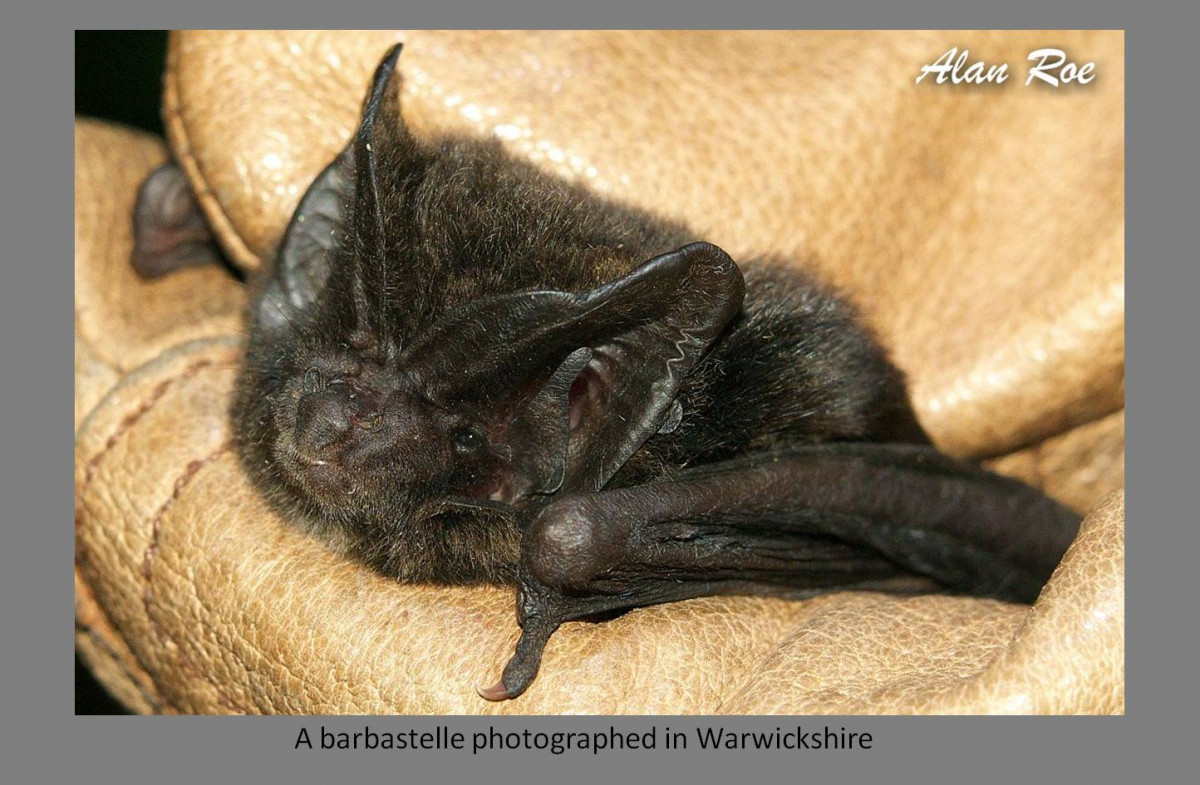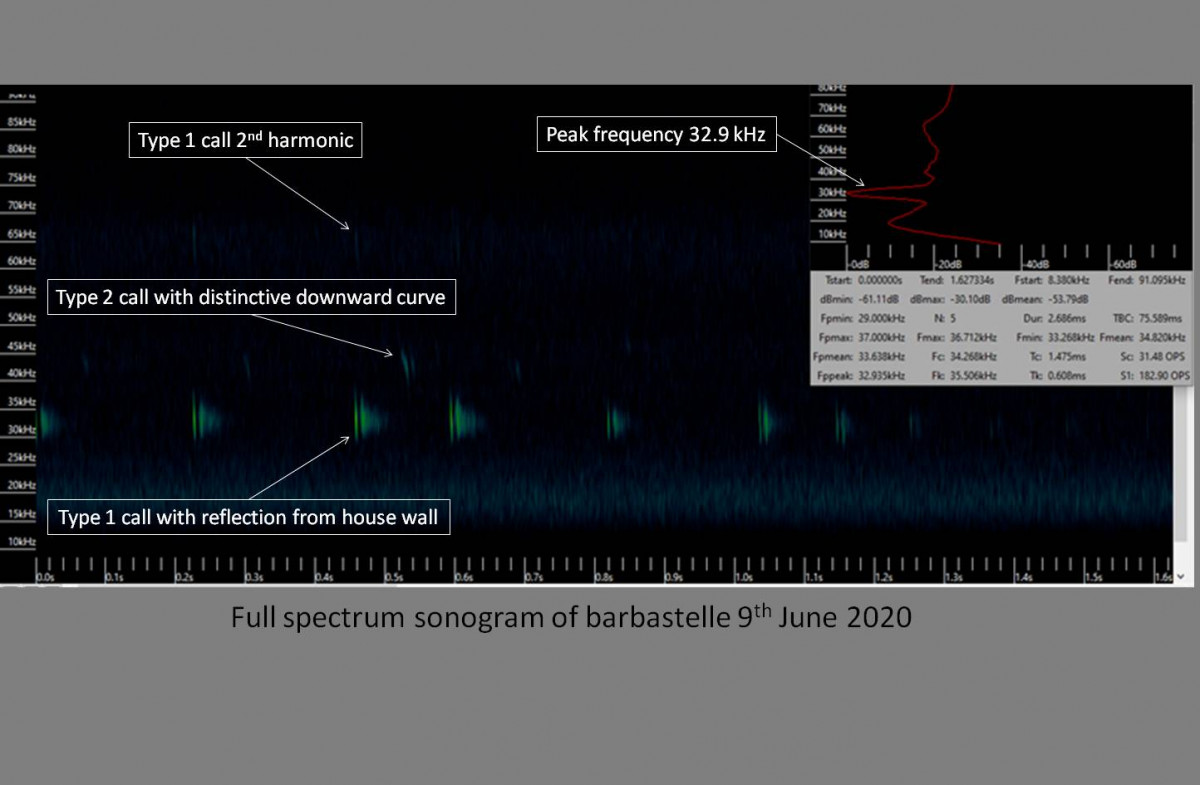I’ve had one of the Group’s Anabat Express detectors out in my South Derbyshire garden since December to see how much bat activity there was over the winter. As we couldn’t deploy it elsewhere during lockdown I thought I might as well leave it to see what turned up. I was pleased to get Leisler’s bat as a garden “tick” in April with 4 more during May (in truth they were over the field at the back rather than in the garden) and a Nathusius’ pipistrelle on 20th May was a great find, not our first here but a good record. However 1st June brought an entirely different level of excitement.
When I downloaded the Analook file shown in the sonogram above I immediately knew what it looked like but was certain it couldn’t be one. I emailed Steve and Garry, the other two members of my rare bats panel who help with verifying unusual records, to see what other ideas they had. Between us, having carefully measured all the key parameters such as peak, start and end frequencies, time between calls and call slope we concluded that it did exactly fit barbastelle. The only thing missing was the quieter type 2 call which is more difficult to pick up and often missed by frequency division detectors.
We scoured the literature for examples of other sounds, natural or otherwise, which could give the same signature and drew a blank. Weak Myotis calls can look superficially like barbastelle and be a trap for the unwary but the strength of this call, the clear start frequency and the slope all ruled out that alternative. Garry pointed out that some Nyctalus social calls can include a narrowband fast trill element but all the examples had much too fast a repetition rate.
It still seemed too fantastic to be true so we sent the file to Analook expert Margaret Clarke who has been dealing with these calls for longer than I’ve been in the bat group. She replied “If I were to see that recording from or near a woodland where I knew there were barbastelles I would label it as a barbastelle without a second thought. But if it is in an area where they are not expected I suppose we should give it the second thought. Even then it still looks like a barbastelle and I can't think of another bat that would make that typical sequence of calls constrained within that range of frequencies. Other possible sources of signal in that range include cars/motors, that can make sounds which look remarkably bat-like and I have seen cricket recordings with similar frequencies ..... but I really don't think they could look quite like your recording”.
Barbastelle is on the Derbyshire list of course following the discovery by Matt Cook of a population at Creswell Crags in 2015 but that site is nearly 50 km north-east of my garden. Nottinghamshire has several sites but the nearest known record is 30 km to the east. So, after much deliberation we decided that the record would be accepted for the Group’s Records Database albeit with a qualifying comment that we considered it highly likely to be a barbastelle but that doubt remained due to the unusual location.
More in hope than anticipation Steven gave me a full spectrum passive detector to put out. It seemed an outrageous record and to expect it to reappear was frankly bonkers. So the full spectrum two part call obtained on the 9th June and shown above which clinches the identification was the cause of the odd expletive when I saw it on the screen!
The next job is to try and find out what route it’s taking – so far it appears to be simply passing by with only single passes recorded on two nights. I have a few ideas about possible flight lines and woodland areas so as well as hoping for more passes in the garden I’ll be trying some sites in the area.
Alan Roe
Derbyshire Bat Group Recorder


